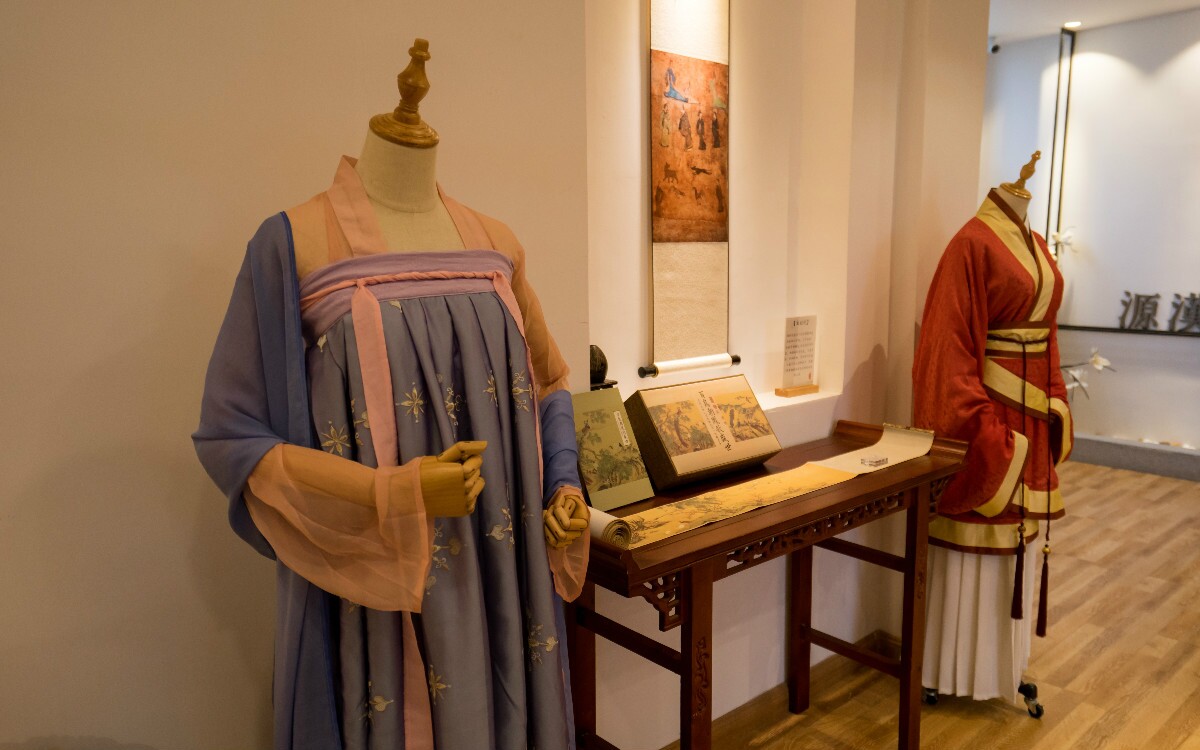

"Chinese ancient clothing" is a phrase commonly used for descriptions of the ancient styles of clothing originally worn by the early Han people in China. In modern times, the phrase "han fu" has been coined by Chinese Internet surfers to broadly define early Han Chinese clothing typically worn prior to the Qing Dynasty. However, it should be noted that the meaning of "han fu" actually predates even this era. The meaning of the phrase "han fu" itself can also be quite vague.
To better understand the nuances of the Chinese language, we will need to use the most commonly used terms. We will start with the most commonly recognized term, "cloth." At any point in time throughout the period, every household had two types of fabric - ordinary fabric and embroidered fabric. In addition, there were numerous other categories of materials used in the attire of the Chinese people. These different categories included such items as perforated and dotted rags, silk and lacquered textiles, jute, and cotton fabrics.
The type of cloth mentioned above was referred to as "cloth-made clothing." During the Qing Dynasty, which lasted from 1426 to 1911, this was the predominant type of Chinese clothing used by Chinese people. During this period, most Chinese men and women wore elaborate clothing. Women would wear the finest silks, satin, velvet, and linen in their garments. Chinese courtly attire was as extravagant as it was grand.
Not all areas of China experienced textile production during the same period. The Southern peninsula was home to a significant textile industry until the nineteenth century. The early Westerners failed to witness the development of Chinese textiles during those days. Some areas, however, still managed to produce textile products during the Qing Dynasty. Examples of these textile products include textiles featuring brocade and silk panels, which were popular during the Qing Dynasty.

During the nineteenth century, advances in technology allowed Chinese to experience textile improvements. The Kangxi Dynasty, for example, witnessed the widespread use of rayon and silk materials in clothing. The process, called silk weaving, required a lot of expertise. Those days, those who could afford it were the ones who made the most of the new technology. They became patrons and designers of the most exquisite clothing in the world.
Chinese clothing during the Qing Dynasty was among the finest ever produced at that time. Silk, jute, and other fabric materials were widely used in Chinese clothing. During this period, the Chinese experienced a rise in both literacy and prosperity. Citizens were able to purchase not only durable and luxurious clothing, but also more useful items, such as metal implements and utensils. This improvement of life, combined with the development of new technology, is what led to the development of what we today recognize as Chinese embroidery.
Chinese embroidery has come a long way since its beginnings. Although wool is still the most commonly utilized material, silk has now surpassed cotton as the number one material employed in Chinese clothing. In addition, the use of other materials, such as jute, has also increased in popularity. These changes reflect the culture and lifestyle of China, as well as the evolution of Chinese clothing. For these reasons, Chinese embroidery has been able to successfully conquer the overseas market.
Chinese clothing represents a rich and colorful past. It is also a proud history. Chinese embroidered clothing is truly timeless. As Chinese people continue to grow more comfortable with global fashion trends, Chinese traditional clothing will also continue to increase in popularity. You can find beautiful Chinese embroidered clothing online at clothing stores throughout the Internet, including those listed here.